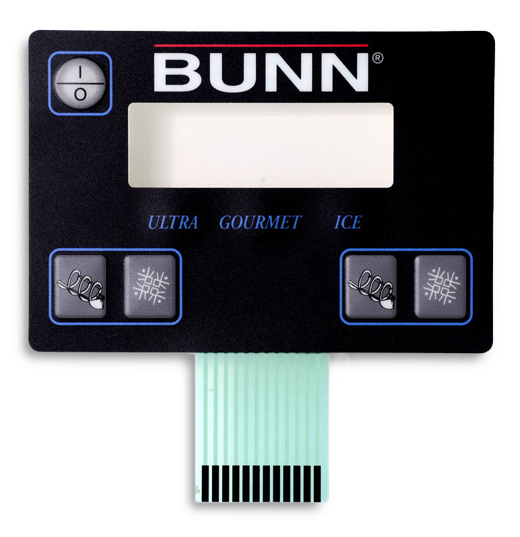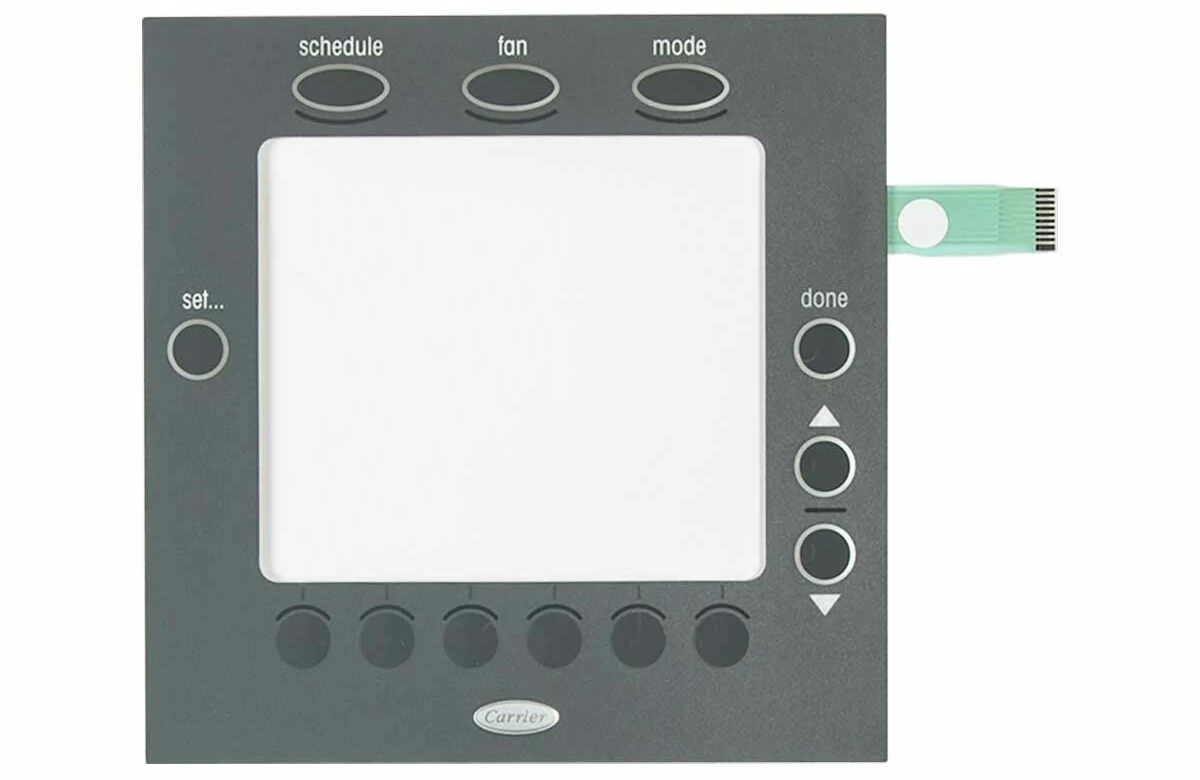Discover How Membrane Switches Function and Their Duty in Modern Electronics
Membrane Switches represent an innovative combination of technology and style within the realm of modern-day electronics, offering as important interfaces in many tools. Comprehending the complexities of Membrane switch performance and their broader ramifications in improving customer experience welcomes further exploration right into their style, benefits, and the innovative advancements forming their future in innovation.
What Are Membrane Buttons?

Membrane buttons are distinguished by their sturdiness and resistance to ecological variables, such as dust, wetness, and extreme temperatures. They can be personalized with different graphics, shades, and responsive responses alternatives, enhancing user experience while keeping aesthetic charm - membrane switches. In addition, the consolidation of published circuits enables for seamless assimilation into devices, boosting total capability.
The adaptability of Membrane switches appears in their ability to sustain both straightforward and complicated control functions. They can incorporate features such as LED indicators and touch-sensitive modern technology, satisfying particular user requirements. As innovation continues to develop, Membrane Switches remain important for enabling reliable and user-friendly individual interfaces, thereby playing a pivotal function in the development of modern digital devices.
Elements of Membrane Switches
Membrane switches are made up of several key components that interact to develop a functional and trusted user interface. The main elements consist of the graphic overlay, glue layer, spacer layer, and conductive traces.
The graphic overlay works as the customer interface, usually printed on an adaptable substrate such as polyester or polycarbonate. This layer not only supplies aesthetic charm but likewise consists of responsive feedback, visual hints, and protective functions. Below the visuals overlay exists the adhesive layer, which protects the button to the gadget and makes certain sturdiness versus environmental anxieties.
The spacer layer is essential for preserving the required gap between the graphic overlay and the circuit layer. When pressure is applied, this void allows for the activation of the button. The conductive traces, generally made from silver or carbon, form the electrical pathways that complete the circuit when the switch is engaged.
In addition, a support layer may be consisted of for structural support and insulation. These components work together effortlessly, guaranteeing that Membrane switches are both easy to use and durable, making them indispensable in various contemporary electronic applications.
How Membrane Switches Job
Exactly how do Membrane Switches function efficiently within electronic devices? Membrane Switches run on the principles of pressure-sensitive innovation, using a layered building and construction that includes graphic overlays, adhesive layers, and conductive components.
The style of Membrane switches is vital for their efficient operation (membrane switches). The layers are diligently engineered to provide responsive responses, longevity, and resistance to ecological factors such as dampness and dirt. The addition of domes-- small, increased locations within the switch-- enhances responsive reaction, providing individuals with a noticeable click feeling upon activation
Furthermore, Membrane switches can be personalized in terms of size, form, and graphics, making them suitable for numerous applications. They are frequently made use of in control panels, medical gadgets, and customer electronics as a result of their sleek style and reliability. On the whole, the efficient functioning of Membrane buttons is crucial in enhancing individual interaction and making sure smooth operation in contemporary digital devices.

Applications in Modern Devices
Using their one-of-a-kind layout and functionality, Membrane switches have actually become essential elements in a vast array of modern electronic devices. These versatile interfaces are employed in consumer electronics, industrial equipment, medical tools, and automotive controls, offering seamless user interaction.
In consumer electronic devices, Membrane switches are typically found in devices like microwaves, cleaning equipments, and various other house tools, where they allow instinctive control with a streamlined account. Their low-profile design facilitates combination right into small devices, enhancing visual charm without jeopardizing functionality.
In commercial applications, Membrane Switches serve as control panels for equipment, using longevity and go to my blog resistance to severe atmospheres. Their ability to withstand dampness and impurities makes them suitable for usage in manufacturing and handling markets.
Medical tools likewise benefit from Membrane switches, which are designed to be simple to clean and keep, making sure hygiene in professional settings. They are frequently used in analysis equipment, person surveillance systems, and mobile medical tools, click here to find out more where dependability is paramount.
Benefits of Membrane Switches
Among the key advantages of Membrane switches is their convenience, which enables them to be customized for a range of applications across numerous markets. These buttons can be developed in various forms and sizes, suiting distinct item requirements while offering smooth integration into tools. Their thin account allows a portable and sleek style, frequently boosting the visual appeal of digital products.
Another considerable benefit is their sturdiness - membrane switches. Membrane switches are commonly resistant to dust, dampness, and chemicals, making them ideal for extreme environments. This durability expands their lifespan compared to standard mechanical switches, minimizing the demand for constant replacements
Additionally, Membrane Switches deal cost-effectiveness. The production procedure involves printing innovations that minimize production costs, especially for big runs. This price, combined with low maintenance demands, makes them an eye-catching alternative for producers.

Final Thought
Finally, Membrane Switches stand for a considerable advancement in interface innovation within modern-day electronic devices. Their split building and construction, pressure-sensitive operation, and adaptability to various applications underscore their importance across multiple industries. The sturdiness and environmental resistance of Membrane Switches additionally enhance their appeal, making them a preferred choice for manufacturers looking for customizable and dependable solutions. As the need for resistant and instinctive interfaces remains to expand, the duty of Membrane switches fit customer experience will most certainly increase.
Membrane Switches represent an innovative assimilation of modern technology and style within the realm of modern electronic devices, serving as crucial interfaces in numerous tools.In the world of contemporary electronics, Membrane Switches serve as crucial components that assist in user communication with devices. As modern technology proceeds to advance, Membrane Switches remain essential for allowing effective and user-friendly customer interfaces, consequently playing a pivotal role in the advancement of contemporary digital gadgets.
Exactly how do Membrane Switches feature effectively within electronic gadgets? Overall, the reliable performance of Membrane switches is critical in enhancing individual communication and ensuring smooth operation in modern electronic tools.